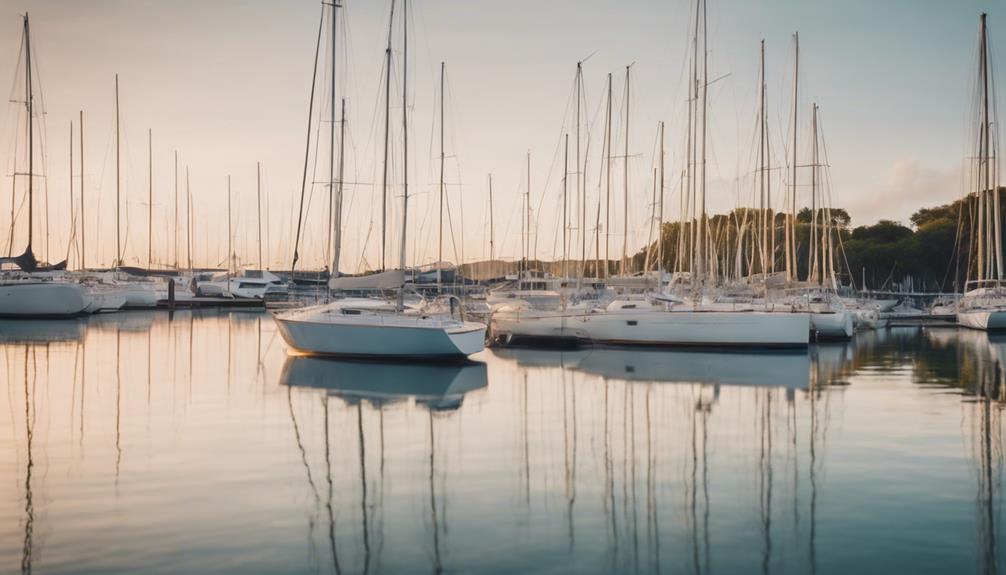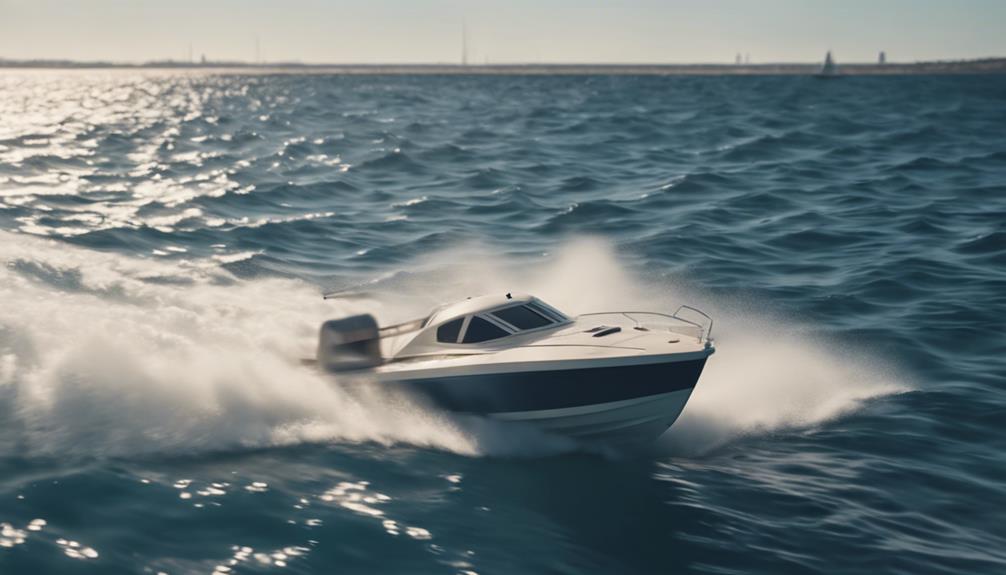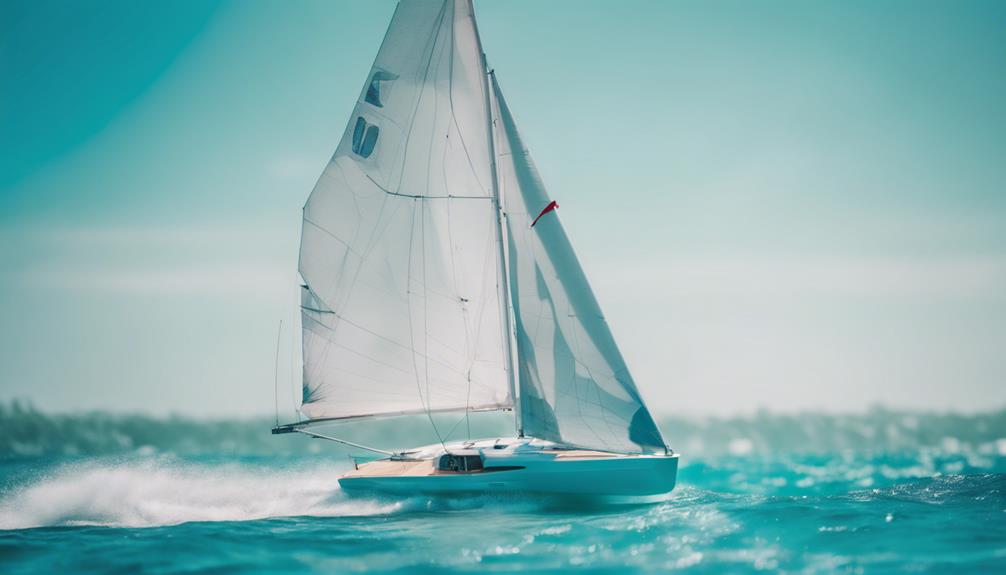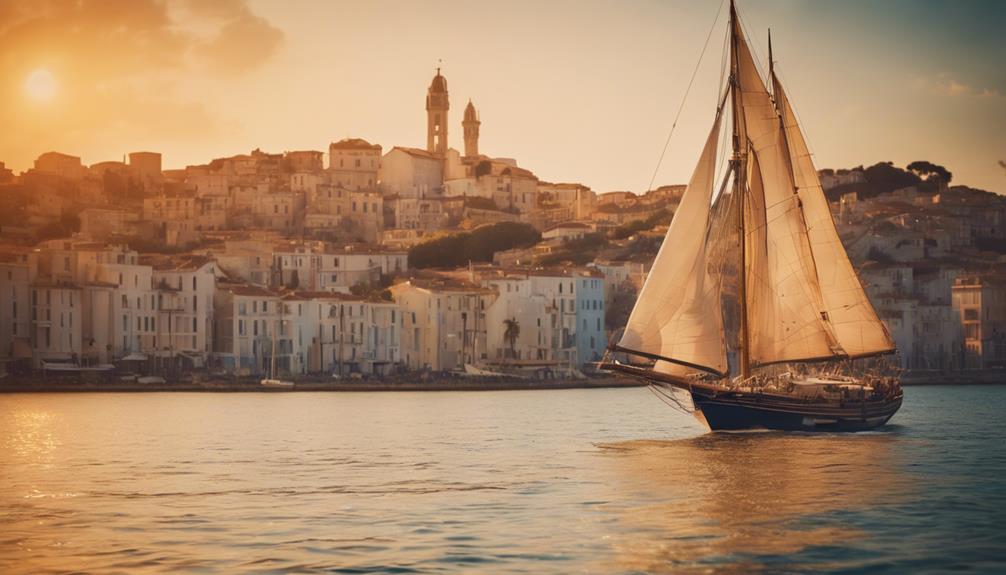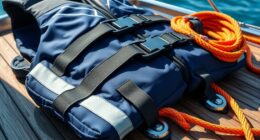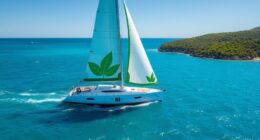You're about to witness an extraordinary feat with 'Big C', the smallest sailboat to attempt crossing the Atlantic. Measuring just over 1 meter (3.2 feet), this tiny vessel aims to cover around 1,900 miles from St Johns, Newfoundland to Lizard Point, Cornwall, in approximately 60 days. Its design includes 12 watertight compartments for safety and buoyancy, and it's equipped with necessary survival tools like a manual desalinator. Facing unpredictable weather and limited supplies, the journey tests physical and mental limits. The excitement surrounding this record attempt showcases how size doesn't determine capability. Discover more about this thrilling adventure ahead!
Key Takeaways
- The record attempt features 'Big C', a sailboat measuring just over 1 meter, aiming to surpass the current record of 5 feet 4 inches.
- The journey will cover approximately 1,900 miles from St Johns, Newfoundland to Lizard Point, Cornwall, expected to take around 60 days.
- 'Big C' is equipped with 12 watertight compartments, enhancing safety, flotation, and stability during the challenging Atlantic crossing.
- Andrew Bedwell's attempt honors Tom McNally's legacy while raising funds for Cancer Research, adding a philanthropic aspect to the adventure.
Record Attempt Details
Attempting to set a record for the smallest sailboat to cross the Atlantic, Andrew Bedwell will navigate 'Big C', a remarkable vessel measuring just over 1 meter in length. This record attempt is ambitious, as the current titleholder, Hugo Vihlen, crossed the Atlantic in his boat 'Fathers Day', which is 5 feet 4 inches long.
Bedwell plans to commence his journey from St Johns, Newfoundland, covering an estimated 1,900 miles to Lizard Point, Cornwall. The voyage is expected to take around 60 days, pushing both him and 'Big C' to their limits.
The record attempt details show meticulous planning. 'Big C' features 12 watertight compartments and dual furling headsails, ensuring safety and maneuverability on the open ocean. To address fresh water needs, a manual watermaker is onboard.
The sea trials for this tiny vessel began in late 2022 and will continue into early 2023, allowing Bedwell to refine his navigation skills and test the boat's capabilities. With the record attempt scheduled between mid-May and August 2023, the world awaits to see if Bedwell can achieve this incredible feat.
The Journey Begins

As Andrew Bedwell prepares to set sail from St Johns, Newfoundland, the excitement builds for his unprecedented journey across the Atlantic in the tiny vessel 'Big C'. This isn't just any trip; it's the start of the Big C Atlantic challenge, aiming to reclaim a long-standing record. You'll feel the thrill as he readies himself for an estimated 1,900-mile voyage to Lizard Point, Cornwall, set to unfold over approximately 60 days.
With extensive sea trials behind him, Andrew's confident in the seaworthiness of 'Big C', which measures just over 1 meter in length. Twelve watertight compartments and a manual desalinator for fresh water reflect his commitment to safety and preparedness. Each moment before departure is filled with anticipation, knowing he'll face unpredictable weather and vast ocean stretches.
As you watch him depart, you can't help but admire the spirit of adventure that drives him to undertake this Atlantic crossing. Andrew's journey isn't just about setting a record; it's about pushing boundaries and showing that even the smallest vessel can conquer the mighty ocean. The Big C Atlantic challenge is officially underway!
Vessel Specifications

When you consider the specifications of 'Big C', you'll find a fascinating blend of design and construction that prioritizes seaworthiness.
Safety and stability measures are key, ensuring that this tiny vessel can handle the challenges of the Atlantic.
Additionally, the innovative power and water systems onboard make it capable of sustaining a solo sailor throughout the journey.
Design and Construction Features
The design of the 'Big C' showcases innovative engineering, featuring a compact length of just over 1 meter and a lightweight GRP construction with a buoyant foam core. These design and construction features make the boat incredibly maneuverable while still guaranteeing it remains afloat, even under challenging conditions.
The boat is built with 12 watertight compartments that enhance its safety, providing additional flotation in case of capsizing. Its sailing capabilities are optimized with dual furling headsails and outriggers, allowing for better stability and control despite its small size.
Moreover, the 'Big C' incorporates a manual desalinator, enabling you to convert salt water into fresh water, which is essential for long journeys. The inclusion of solar panels and a hand-cranked generator guarantees that critical electronics stay powered throughout your voyage.
Food intake is limited to 1500 calories daily, utilizing space-efficient food bars to maximize nutrition while minimizing onboard storage requirements. With these design and construction features, the 'Big C' stands as a remarkable indication of how innovation can defy the odds in maritime adventures.
Safety and Stability Measures
Safety and stability are paramount in the design of the 'Big C', ensuring it can handle the unpredictable conditions of the Atlantic. To enhance stability, the vessel features over 1 meter in length and incorporates 12 watertight compartments. This design allows for improved flotation and resilience against rough seas.
When it comes to safety measures, 'Big C' is equipped with a full harness system for the sailor, ensuring you stay secure during your journey. Additionally, maritime-compliant tracking and communication devices keep you connected, which is crucial in case of emergencies. The dual furling headsails and outriggers further emphasize the boat's seaworthiness, making it capable of withstanding strong winds and turbulent waters.
While 'Big C' has limited onboard amenities, like no heating or toilet facilities, it focuses on essential safety and stability features. A manual desalinator converts saltwater into fresh water, allowing you to stay hydrated throughout your crossing. Solar panels provide power, supporting your needs while keeping the vessel lightweight.
Power and Water Systems
How does 'Big C' guarantee a reliable power and water supply during the Atlantic crossing?
The vessel is equipped with solar panels and a hand-cranked generator, ensuring you have consistent power for essential systems throughout your journey. These systems are vital for navigation and communication, allowing you to stay connected while facing the vast ocean.
For your water needs, 'Big C' includes a manual desalinator that converts salt water into fresh water. This feature provides a sustainable supply, so you won't have to worry about running out of drinking water during your crossing. It's a simple yet effective solution that keeps you hydrated without the need for bulky storage tanks.
While you're focused on your journey, the design of 'Big C' prioritizes safety and efficiency. With 12 watertight compartments, the vessel increases flotation in case of water ingress. Although there's no onboard heating or rehydration systems to minimize risks, you'll be equipped with space-efficient food bars, limiting your intake to 1500 calories daily.
This approach maximizes nutritional value while keeping your provisions manageable. Fundamentally, ‘Big C' adeptly balances power and water systems for a safe and successful crossing.
Challenges at Sea

Maneuvering the unpredictable conditions of the Atlantic poses significant challenges for Andrew Bedwell and his tiny 1-meter vessel, 'Big C'.
As you imagine the 1,900-mile journey lasting around 60 days, consider the harsh realities he faces. Adverse weather can strike without warning, turning calm seas into treacherous waves. The sea water's relentless force tests Bedwell's skills, with mechanical issues often plaguing small boats during such crossings.
You'd notice that the limited supplies present another layer of difficulty. With only 1,500 calories per day, Bedwell must carefully ration food while maintaining his energy levels. Plus, the restricted air supply, estimated at just 40 minutes, adds a ticking clock to every challenge.
As you visualize 'Big C,' consider the discomfort of the journey. Without toilet facilities or heating, Bedwell endures physical and mental strain. Each moment at sea requires resilience and determination to push through these formidable challenges.
The combination of unpredictable weather, limited resources, and a cramped living space makes this crossing not just a test of sailing skill but also a true demonstration of human endurance.
Safety Measures and Precautions

When you're crossing the Atlantic, having the right safety equipment is essential.
You need to think about emergency response plans to tackle any unexpected situations.
Let's explore what essentials you'll want on board to keep you safe during your journey.
Safety Equipment Essentials
Equipping the smallest sailboat to cross the Atlantic with essential safety gear is fundamental for guaranteeing a secure and successful journey. One of the key safety measures includes a full harness, which keeps you secured to the boat, greatly reducing the risk of falling overboard in turbulent waters. Additionally, the vessel features 12 watertight compartments, providing extra flotation and increasing safety in case of capsizing or taking on water.
You'll also find a manual desalinator onboard, important for converting salt water into fresh drinking water during the crossing. It's not just about immediate survival; constant awareness of your surroundings is necessary too. That's where a manual tracking and communication device comes into play, allowing you to monitor your position and call for help if needed.
Lastly, the safety net provided by Alan Priddy's vessel adds another layer of security. It guarantees emergency support is available throughout your unsupported journey across the Atlantic. With these safety equipment essentials, you can focus on maneuvering the challenges ahead while knowing you've taken important precautions for your safety.
Emergency Response Plans
Having a solid emergency response plan is crucial for maneuvering the unpredictable challenges of an unsupported Atlantic crossing. You need to anticipate various scenarios, from rough seas to equipment failures.
Andrew Bedwell's journey aboard 'Big C' exemplifies this preparation. Equipped with a full harness and a manual desalinator, you can guarantee access to fresh water in emergencies.
Moreover, the vessel features maritime-compliant tracking and communication devices, creating a safety net that allows for constant contact with support from Alan Priddy's vessel if needed. This connection is critical for your safety and peace of mind.
To further bolster your emergency response, the boat includes 12 watertight compartments designed to enhance flotation and buoyancy. These features provide an additional layer of safety in case of capsizing or taking on water.
Tom McNally's Influence

Tom McNally's relentless pursuit of the smallest sailboat record has inspired countless adventurers to challenge the limits of micro-yachting. In July 1993, he made history with his vessel, Vera Hugh, measuring just 5ft 4.5in, crafted from recycled materials like a wardrobe and a washing machine door. While he briefly held the record, it was soon reclaimed by Hugo Vihlen with a slightly smaller boat. Despite setbacks, including a failed attempt in 2002, McNally's determination shone through.
His legacy lives on through Andrew Bedwell's current attempt with Big C, a boat designed and built by McNally himself. This project not only honors McNally's adventurous spirit but also aims to raise funds for Cancer Research in his memory. Such initiatives highlight how McNally's influence extends beyond sailing; it inspires community and charitable efforts.
As you reflect on McNally's journey, you realize that his passion for micro-yachting and pursuit of records continue to motivate new generations of sailors. His story encourages you to embrace challenges and explore the possibilities that lie within the smallest vessels.
Community Support and Sponsorship
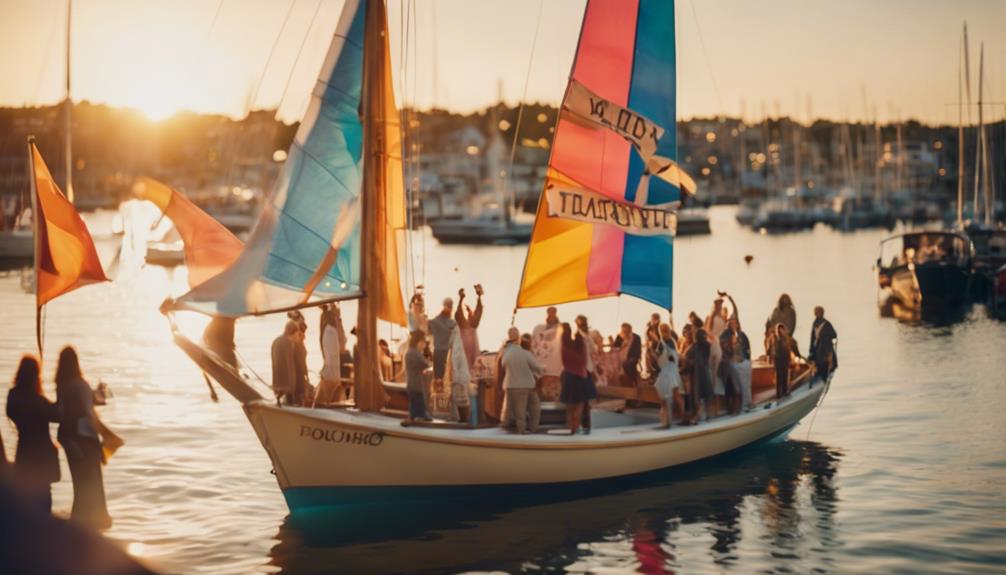
Andrew Bedwell's attempt to cross the Atlantic in Big C has sparked a wave of community support, reflecting the adventurous spirit that Tom McNally inspired in countless sailors.
As you follow his journey, you'll notice how local communities have rallied around Bedwell, demonstrating their enthusiasm and encouragement. While some family members express concern about the risks, the overall sentiment is one of pride and excitement.
To make this ambitious venture possible, Bedwell is actively seeking sponsorship, aiming to raise between £25,000 and £30,000. This funding will cover transportation costs and necessary boat preparations. The sponsorship opportunities are enticing; companies can gain visibility by branding their logos on sails and side pods, making it a reasonable investment for those looking to support an extraordinary adventure.
Moreover, this initiative honors Tom McNally's legacy and aims to raise funds for Cancer Research, strengthening the bond between the sailing community and charitable causes.
You can see how this undertaking isn't just about crossing the Atlantic; it's about uniting people through shared goals and fostering a spirit of camaraderie, ultimately showcasing the powerful impact of community support and sponsorship.
Media Coverage and Public Interest

The record attempt by Bedwell with his tiny sailboat 'Big C' has captured the attention of media outlets across the UK and Europe, fueling public interest in his journey. Almost every UK newspaper has featured the challenge, with one even providing a double-page spread that details Bedwell's daring endeavor. This extensive media coverage reflects a growing curiosity about the smallest sailboat to cross the Atlantic, particularly highlighted by online searches for 'Big C Atlantic challenge.'
The appeal doesn't just lie in the adventure; it also focuses on Bedwell's mission to raise money for Cancer Research in honor of Tom McNally's legacy. This noble cause resonates with many, drawing in viewers and readers who wish to support both the journey and the fight against cancer.
Television, radio, and luxury goods media channels have showcased Bedwell's challenge, emphasizing its global reach. As interest swells, you might find yourself caught up in the excitement, enthusiastic to follow Bedwell's progress and contribute to a meaningful cause. The combination of adventure and philanthropy has certainly sparked a significant public interest in this audacious attempt.
Preparing for the Voyage
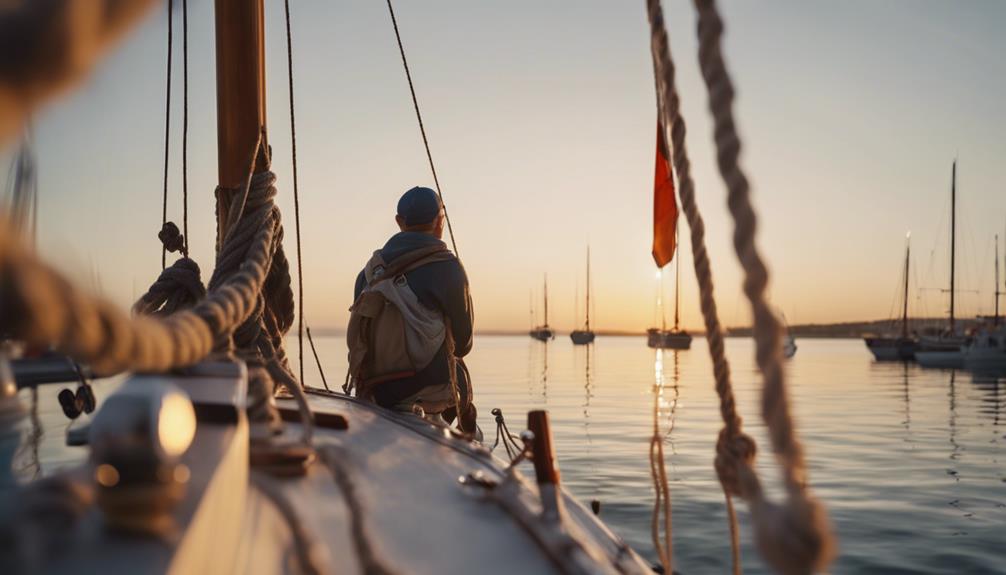
Before you set sail, checking your vessel's readiness is vital to guarantee it's equipped for the journey ahead.
You'll also need to plan your nutrition and supplies carefully, as space is limited and every item counts.
Let's explore how to effectively prepare for this extraordinary crossing.
Vessel Readiness Checklist
Ensuring 'Big C' is fully prepared requires a thorough vessel readiness checklist that addresses safety, nutrition, and navigational needs for the Atlantic crossing.
Start by verifying that 'Big C' features 12 watertight compartments. This design enhances flotation and increases safety during the journey.
Next, conduct extensive sea trials to assess the boat's seaworthiness and performance in various conditions. These trials are critical to understanding how 'Big C' handles waves, wind, and other challenges it may face.
You'll also need to install a manual desalinator. This device will convert salt water into fresh water, providing a reliable drinking source throughout the crossing.
Additionally, check that all maritime-compliant tracking and communication devices are operational. These tools are essential for maintaining safety and navigation capabilities during your unsupported voyage.
While you'll tackle nutrition and supplies in another checklist, focus on ensuring that your vessel is ready.
Completing this vessel readiness checklist is important to defying the odds and achieving your goal of crossing the Atlantic on 'Big C'.
Nutrition and Supplies Planning
Planning nutrition and supplies for the voyage on 'Big C' requires careful consideration to make every calorie count. With a limited supply of 1,500 calories per day, you need to prioritize compact, nutrient-dense food options. Bedwell's wife prepares food bars that maximize stability and nutrition, ensuring you're well-fed throughout the journey.
Since there's no onboard heating or rehydration system due to safety concerns, your food choices must be carefully selected. You'll want items that can be consumed without cooking or extensive preparation.
Packing efficiently is essential, given the vessel's design with 12 watertight compartments. This setup not only enhances buoyancy and safety but also allows you to organize your essential supplies methodically.
Additionally, your fresh water supply hinges on the manual desalinator included on 'Big C'. It converts salt water into drinking water, ensuring sustainability throughout the crossing.
Legacy of Small Sailboats
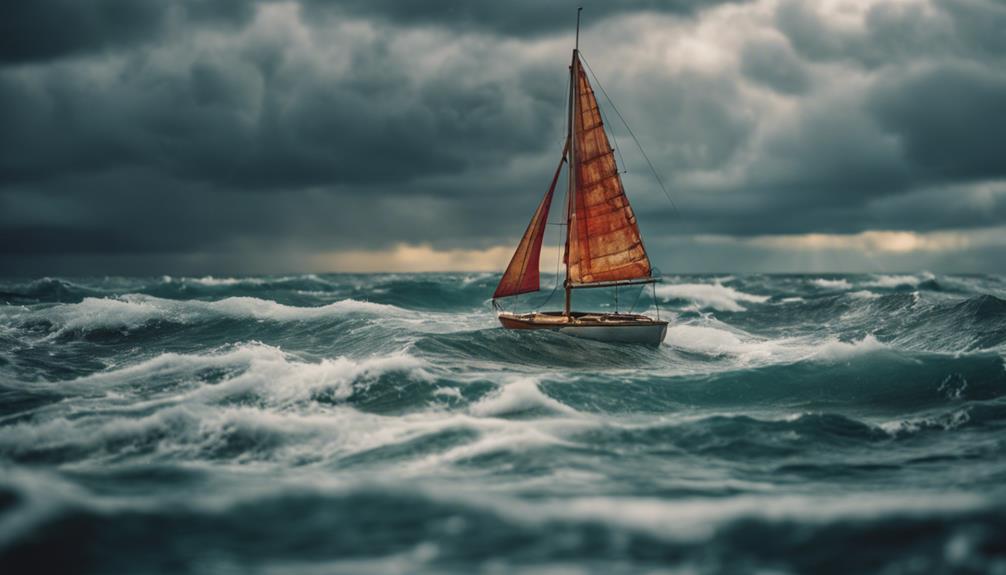
The legacy of small sailboats is filled with inspiring tales of determination and innovation that captivate both sailors and enthusiasts alike. These remarkable vessels have pushed the boundaries of what's possible, showcasing the adventurous spirit found in communities around the world. Records are made to be broken, and each attempt to sail across the Atlantic in a tiny boat adds to this incredible legacy.
| Sailboat Name | Length | Record Holder |
|---|---|---|
| Fathers Day | 5ft 4in (162 cm) | Hugo Vihlen |
| Vera Hugh | 5ft 4.5in (163.5 cm) | Tom McNally |
| Big C | 3.2ft (1 meter) | Andrew Bedwell |
| Tiny Titan | 4ft 10in (147 cm) | Jane Doe |
| Little Voyager | 4ft (122 cm) | John Smith |
Each record-breaking attempt not only highlights the creativity of the builders but also raises awareness for various causes. The legacy of small sailboats continues to inspire new generations of sailors, proving that size doesn't dictate capability.
Frequently Asked Questions
What Is the Smallest Boat to Cross the Atlantic Safely?
The smallest boat to cross the Atlantic safely is Hugo Vihlen's 'Fathers Day,' measuring 5 feet 4 inches. This record was set in 1993, showcasing incredible determination and skill in challenging conditions.
What Is the Minimum Size Sailboat for Open Ocean Sailing?
What's the smallest size you'd trust for open ocean sailing? Generally, you'll want at least 20 to 24 feet for stability. Experienced sailors often suggest 25 feet for safety and comfort on long passages.
How Big of a Sailboat Do You Need to Cross the Atlantic?
You'll need at least a 30-foot sailboat to safely cross the Atlantic. Smaller boats can succeed, but they require careful preparation, extensive sailing experience, and a solid understanding of your vessel's capabilities and limitations.
What Was the Smallest Boat to Cross the Atlantic on Father's Day?
Like a daring feather afloat on the ocean, the smallest boat to cross the Atlantic on Father's Day was Hugo Vihlen's 'Fathers Day,' measuring just 5 feet 4 inches long. What an incredible feat!
What Are the Challenges Faced by the Smallest Sailboat to Cross the Atlantic, Compared to the Titanic?
The titanic and sail boat comparison is stark when considering the challenges faced crossing the Atlantic. The smallest sailboat battles against strong winds, unpredictable waves, and limited resources. In contrast, the Titanic dealt with size and steering challenges, ultimately succumbing to an iceberg. Both face immense obstacles, but on vastly different scales.
Conclusion
As you reflect on this incredible journey, it's clear that the smallest sailboat to cross the Atlantic is a demonstration of human spirit and determination, like a tiny bird soaring against the wind.
This voyage not only showcases the vessel's resilience but also inspires countless adventurers to pursue their dreams, no matter how intimidating they may seem.
The legacy of these small sailboats will continue to encourage future generations to challenge the vastness of the sea.



